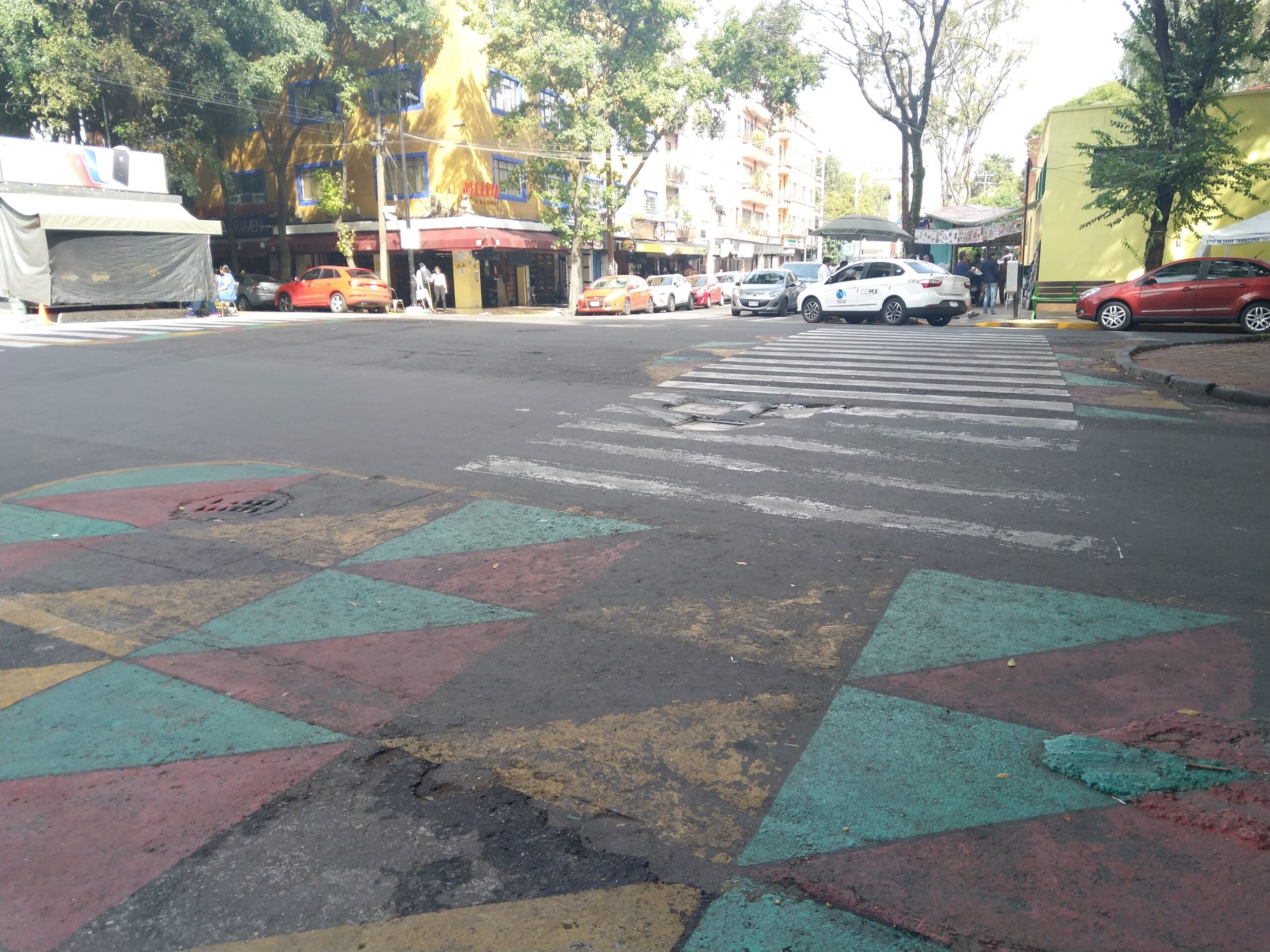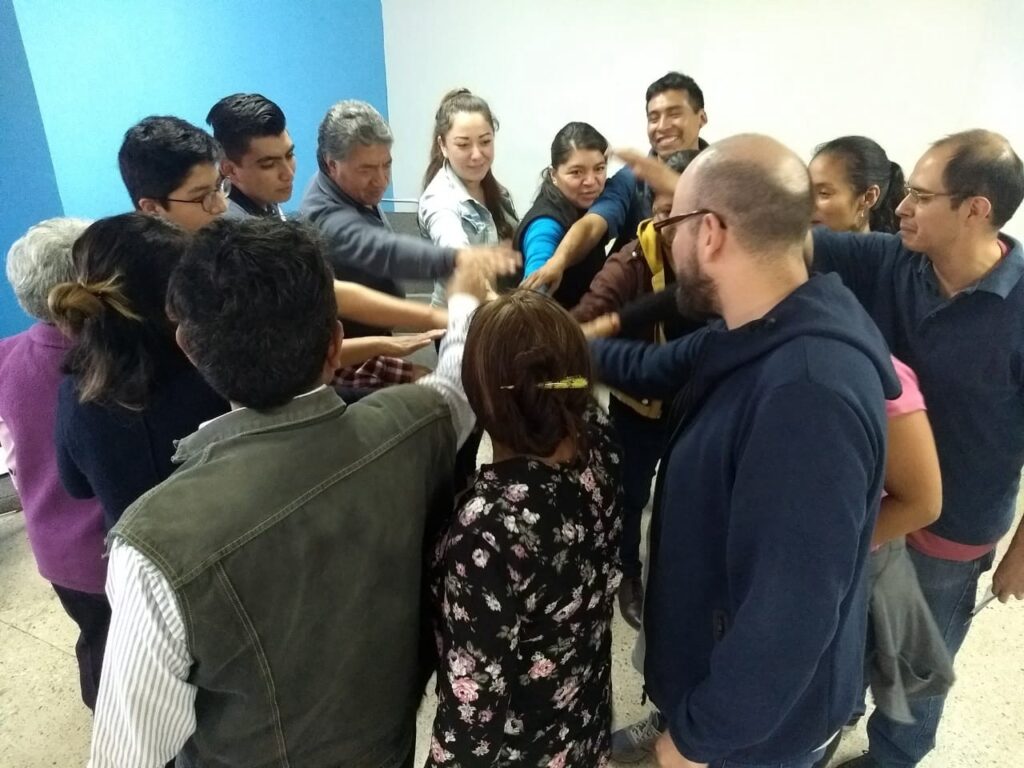As part of our “Planners & Architects Perspective” series, we bring readers this interview with Laura Puttkamer of parCitypatory.
Laura Puttkamer is an urban journalist, writer and consultant on participatory methods in urban development. She holds a master’s degree in “Global Urban Development” and has lived and worked in Germany, the UK, India, Ethiopia and Mexico. Laura focuses on solutions journalism and on sharing innovative approaches to SDG 11 on a local level, and how these solutions can be scaled up. She blogs at www.parcitypatory.org.
“We cannot go back to normal but need to tap into the fact that so many people appreciate the many good things about their cities more now. More green spaces, shorter ways, a 15-minute design where possible, and more walkability are some key issues we need to keep working on in order to improve urban resilience, also thinking of potential future lockdowns.”
Laura Puttkamer
Pedestrian Space: When did you conceptualize and launch parCitypatory?
Laura: I launched parCitypatory five years ago, in 2016, as a blog showcasing participatory approaches from all over the world. The blog is still running and has grown along the way to a consultancy, where I offer journalistic support at the intersection of urban development, community engagement and climate action.
Pedestrian Space: Your work involves “showing many different approaches to successful participation and modes of urban development in cities all over the globe”. We would love to hear more about various projects and engagements you have worked with in different cities.
Laura: I invite many guest contributions, but also feature projects that I have worked on myself. In addition, I like speaking at events to showcase the many examples of participatory techniques from my blog.

These are a few of my favourite projects:
- In Manchester, UK, I was working with a community group and other students to identify ways of improving the neighbourhood cohesion in Levenshulme. We used participatory mapping and eventually came up with ideas such as street festivals and the use of back alleys as community gardens.
- In Mexico City, I was supporting a local NGO that worked with a vulnerable community at the fringes of the city. We focused on storytelling to gather powerful narratives which could leverage the support of local government for various urban planning efforts driven by the community.
- In New Delhi, India, I was part of a project that focused on female empowerment. Local organisations, supported by the municipalities, set up women’s savings groups. We worked on communicating their success and inviting other neighbourhoods to set up similar groups.

“I have also noticed the importance of media and social media in participation. Many people like to document their process and to get input from beyond their own community. As a journalist, I focus on giving many different voices a platform to share their participatory projects with others, which can lead to amazing networking.”
Laura Puttkamer
Pedestrian Space: What are some of your favorite participation and engagement tools and practices?
Laura: That’s a great question! Personally, I really love working on the ground (literally): drawing with chalk, using large maps, playing with Lego bricks and anything else that is accessible and mostly, fun. Working with art eliminates the need for jargon and makes participatory projects much more inviting for everyone. I also think it is really important to always document the process and share it with participants afterwards.
Pedestrian Space: Can you share a story of a particularly challenging project you have been involved with implementing a participatory method with? What about a particularly successful example that you might hold up as a “model project”?
Laura: Generally speaking, I think language barriers and trust are some of the biggest issues when using a participatory method. Ideally, facilitators come from the community itself, rather than being foreigners who don’t really know the local situation. Working with local leaders and the elderly, but also getting support from children and teenagers are particular challenges that can ideally be turned into creative approaches to participation.
I have also noticed the importance of media and social media in participation. Many people like to document their process and to get input from beyond their own community. As a journalist, I focus on giving many different voices a platform to share their participatory projects with others, which can lead to amazing networking.

Pedestrian Space: You have lived all over the world but spent a good deal of time recently in Mexico City. Can you share any insights from your time and experience there as well as any projects you worked on while you were there?
Laura: Mexico City is a beautiful, vibrant, modern and ancient city at the same time. There are countless initiatives. I tried to collect a few of them in the series on SDG 11 implementation in Mexico City on my blog. While I did not find it easy to work on projects there, being from a very different country, I enjoyed reporting about these different projects.
I also saw how the mayor of a city can shape the approach of local government. Mexico City’s mayor, Claudia Sheinbaum, is a highly educated, fascinating woman who has been pushing for a greener, more sustainable city for a long time. She struggles with corruption in government and other challenges, but she is a great example for how we need more female scientists in charge!
For anyone looking to go into more detail, I recommend starting with this article on Mexico’s former urban innovation lab.
Pedestrian Space: Now, we have to ask some walkability questions! How did you move around Mexico City mostly? What is mobility like there?
Laura: Walkability in central areas of Mexico City is relatively good, although it is not that common for people to walk. Whoever can afford to own a car drives around and the city is still very car-centric. At the same time, gentrifying neighbourhoods such as La Roma and La Condesa are getting more walkable with projects such as these colourful pedestrian crossings:

“Walkability in central areas of Mexico City is relatively good, although it is not that common for people to walk. Whoever can afford to own a car drives around and the city is still very car-centric.”
LAURA PUTTKAMER
But public transport in Mexico City is also much better than its reputation. Metro rides are incredibly cheap and the network is good. Some new cable car lines are being built to connect the more informal city outskirts to the metro line, which is an important development in many Latin American cities. A particularly good example of innovative, sustasinable and cheap transportation is the metro bus, which has its designated line and can feel safer than the crowded metro.
I also think there is potential for more cycling in the city. During the pandemic, pop-up lanes have grown in Mexico City as well, and the mayor has already promised to make at least a few of them permanent. I have only cycled in Mexico City once and found it to be quite the adrenaline kick!
Pedestrian Space: What were your urban mobility patterns and preferences when living in your hometown of Hamburg?
Laura: In Hamburg, I walk wherever I can. If that’s not possible, I enjoy the public transport system, in particular the metro, but also the buses. A highlight is the ferry system, which is often under-used because not too many people know about them. They might be slower, but if you have a bit of time, they are the best way to get from A to B in a city as influenced by waterways as Hamburg.
“…as horrible as the pandemic is, it has given us as urban planners an interesting opportunity to rethink urban design and the future of cities.”
Laura Puttkamer
Pedestrian Space: Has the pandemic affected any aspect of your work or your outlook on participatory methods?
Laura: Yes, definitely. We have seen a big rise in virtual participation and smart city technologies for citizen engagement. This is not always attractive, considering we all have “Zoom fatigue” by now, but it is often a more inclusive tool than on-the-ground participation as it enables many more people to take part. However, we also have to be mindful of the digital divide, especially when it comes to older generations and those who cannot afford various gadgets or a good internet connection.
Speaking of fatigue, there is also a phenomenon called “participation fatigue”. By experimenting with new ways of participating, from digital tools to augmented reality, we have an opportunity to make participation more fun, thus inviting more people to join.
Also, as horrible as the pandemic is, it has given us as urban planners an interesting opportunity to rethink urban design and the future of cities. One example are the pop-up bike lanes, which many citizens are hoping are here to stay. In Milan in Italy, they have already started to implement changes for more walkability and cyclability into policies, and I think that’s really important for other cities as well. We cannot go back to normal but need to tap into the fact that so many people appreciate the many good things about their cities more now. More green spaces, shorter ways, a 15-minute design where possible, and more walkability are some key issues we need to keep working on in order to improve urban resilience, also thinking of potential future lockdowns.

“However, there are not enough books written by women and by people of colour, which is why I am struggling to keep the book club as diverse in terms of reading material as I would like. I am hoping this will get better with time as there will be more and more diverse authors and voices.”
Laura Puttkamer
Pedestrian Space: We really love your Urbanism Book Club and the way you weave in social media with monthly book reads as well. When did you get the idea for this Book Club and launch it? Have there been some “stand-out moments” in terms of book reads that were particularly pivotal for you and your work?
Laura: This book club is my pandemic project. I finally had some time to actually read all of the books that we all know and like to quote, such as “The Death and Life of Great American Cities” by Jane Jacobs, but that we often never read from cover to cover. The book club, where each month we read a book related to urbanism and discuss it on Instagram, has been my motivation to dive deeper into the many great books that are out there. It has often inspired me to see my own city through new eyes. For example, I took a whole day to observe the “neighbourhood ballet” on my street in Mexico City and documented it: https://parcitypatory.org/2020/08/28/neighbourhood-ballet/
However, there are not enough books written by women and by people of colour, which is why I am struggling to keep the book club as diverse in terms of reading material as I would like. I am hoping this will get better with time as there will be more and more diverse authors and voices. For now, I can highly recommend “Feminist City” by Leslie Kern, our April 2021 read.
Pedestrian Space: What are some of your key concerns as well as hopes in terms of sustainable urban development over the coming decade?
Laura: That’s a big and really important question! I am hoping that we will get as close as possible to fulfilling the United Nations’ Sustainable Development Goals, many of which are centered around cities and the crucial intersection of urban development and climate change. The New Urban Agenda with its focus on the Right to the City and to the “Leave No One Behind” principle should be a guiding force for many cities, resulting in local “Agenda 2030” projects and enabling much more citizen participation than we currently have.
Read Laura’s interview with Pedestrian Space Founder and Editor Annika Lundkvist here!


